Environmental Regulation: RA 8749 Philippine Clean Air Act of 1999
1/84
There's no tags or description
Looks like no tags are added yet.
Name | Mastery | Learn | Test | Matching | Spaced |
|---|
No study sessions yet.
85 Terms
WHO, levels of lead in the air in Manila
On March 1999, Philippines started to talk about
three times
Levels of lead are more than _______ the established safety limit
suspended particulate matter
concentrations of _________ are also extremely high
EO 1997-446
phase out of
leaded gasoline
• Not later than 01 January
2000
June 23, 1999
Enactment of RA 8749
July 2, 1999
CAA Publication
July 17, 1999
CAA effectivity
November 10, 2000
• IRR was published
• Implementation
(November 25,
2000)
January 10, 2005
Establishment of
Metro Iloilo Air
Shed
E.O. 192
Under ___________, EMB is mandated to provide research and laboratory services; and serve as secretariat in the adjudication of pollution cases.
EO 320
Under ________, EMB is designated as the secretariat of the Designated National Authority for CDM of the Kyoto Protocol to the United Nations Framework Convention on Climate Change.
RA 8749
Philippine Clean Air Act of 1999
Comprehensive Air Pollution Control Policy and for other Purposes
An Act Providing for a
achieve and maintain healthy air for all Filipinos.
is a comprehensive air quality management policy and program which aims to ________
The state shall:
• Protect and advance the right of the people to a balanced and healthful ecology in accord with the rhythm and harmony of nature;
• Promote and protect the global environment while recognizing the primary responsibility of local government units to deal with environmental problems;
• Recognize that the responsibility of cleaning the habitat and environment is primarily area-based;
• Recognize that "polluters must pay";
• Recognize that a clean and healthy environment is for the good of all and should therefore be the concern of all.
Salient Features of CAA 1999
The Secretary of the Department of Environment and Natural Resources (DENR), upon recommendation of the Environmental Management Bureau (EMB), will divide the country into different air sheds.
How will air quality in the country be managed?
Air sheds
Areas with common weather or meteorological condition and sources of air pollution which affect the interchange and diffusion of pollution in the surrounding atmosphere.
Management of Air sheds

22
5
There are ____ airsheds in the Philippines, _____ of which are specially designated geothermal airsheds due to the presence of a geothermal plant.
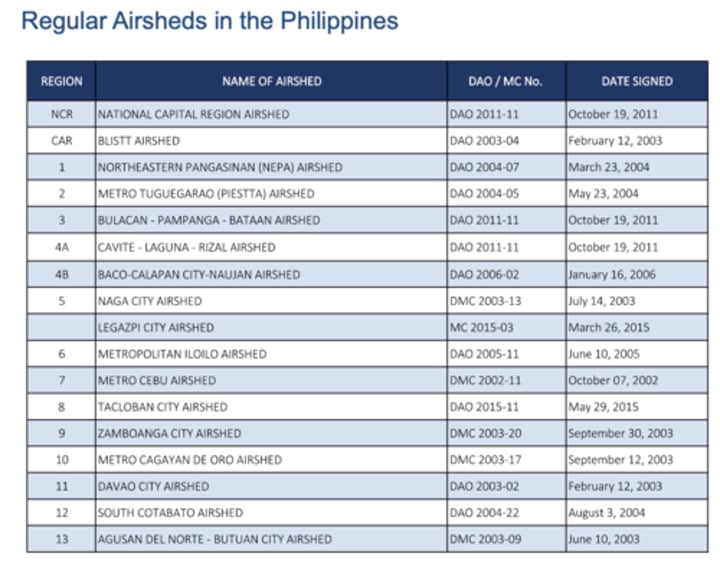
Geothermal Airsheds in the Philippines

National Ambient Air Quality Guideline Values
The _______________, in order to protect health, safety, and the general welfare, have been set in law.
• Reviewed by DENR through EMB
potential sources of air pollution
All ______________ (mobile, point and area sources) must comply with the provisions of the law. All emissions must be within the air quality standards.
Mobile sources
refer to vehicles like cars, trucks, buses, jeepneys, tricycles, motorcycles, and vans.
Point sources
refer to stationary sources such as industrial firms and the smokestacks of power plants, hotels, and other establishments.
Area sources
refer to sources of emissions other than the above. These include smoking, burning of garbage, and dust from construction, unpaved grounds, etc.
2000
The complete phase out of leaded gasoline before the end of the year ______
0.5% 0.3%
0.2% 0.05%
The lowering of the sulfur content of industrial and automotive diesel, respectively, from ___ to ____ and from ____ to ____.
45% 35%
4% 2%
The lowering of aromatics in unleaded gasoline from _____ maximum to _____ maximum; and the lowering of benzene in unleaded gasoline
from ____ maximum to ____ maximum.
Certificate of Conformity (COC)
Certificate of Compliance to Emission Standards (CCES)
Securing a _________ by DENR, manufacturer, assembler/ importer or __________ issued by the DOTC
DAO 2000 - 81
Emission Limits for Passenger/Light Commercial Vehicles as a Function of the Given Reference Mass Type Approval

Smoke belching vehicles
on the road shall be subjected to emission testing by properly equipped enforcement teams from the DOTC/LTO or its duly deputized agents. Violators will be subject to the following fines/penalties:

National Emission Standards for Source Specific Air Pollutants (NESSAP)
National Ambient Air Quality Standards (NAAQS)
• All stationary sources must comply with the ___________ and _________
• Must secure their permit to operate, prior to operation
National Ambient Air Quality Guideline Values (NAAQGV)
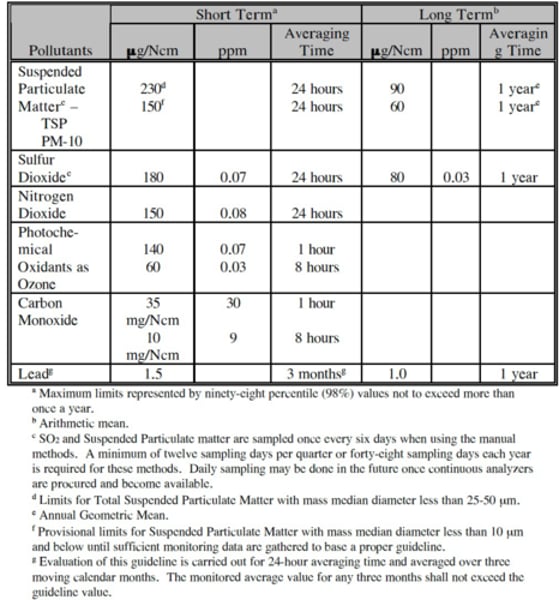
IRR CAA 1999
DAO 2000 - 81
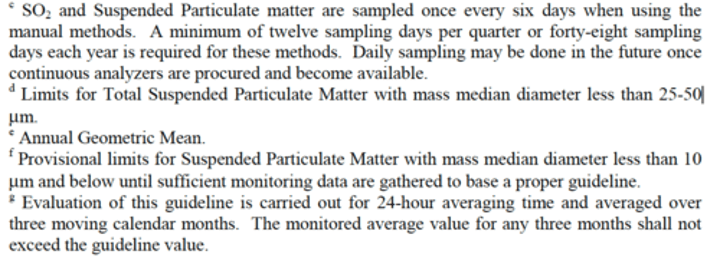
DAO 2020 - 14

National Ambient Air Quality Guideline Standards (NAAQGS)
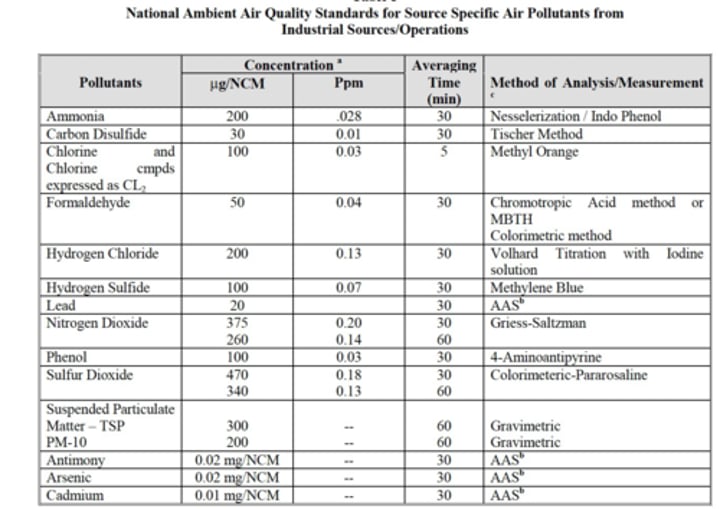
IRR CAA 1999
DAO 2000 - 81

National Emission Standards for Source Specific Air Pollutants (NESSAP)
IRR CAA 1999
DAO 2000 - 81
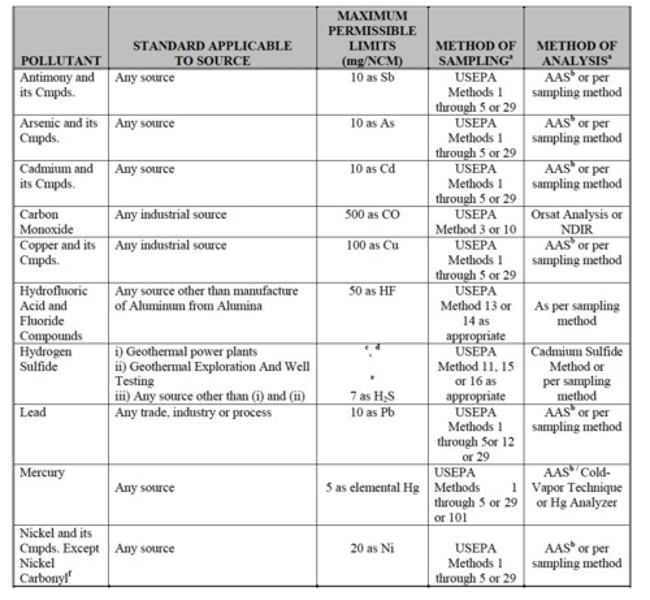
IRR CAA 1999
DAO 2000 - 81
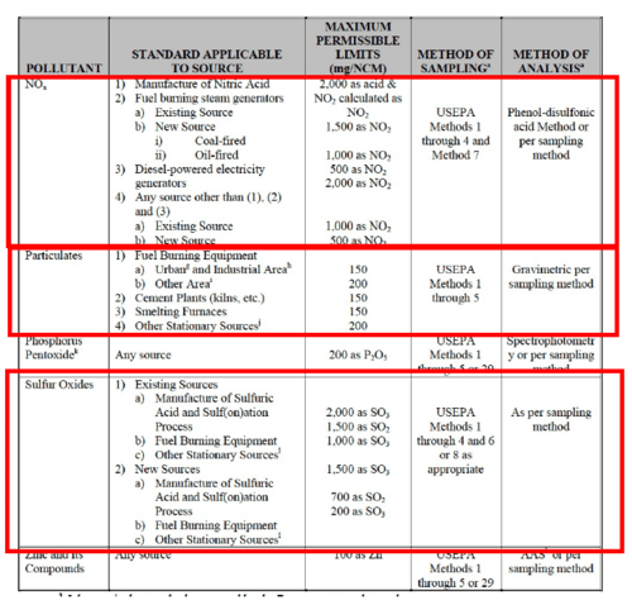
Permit to Operate
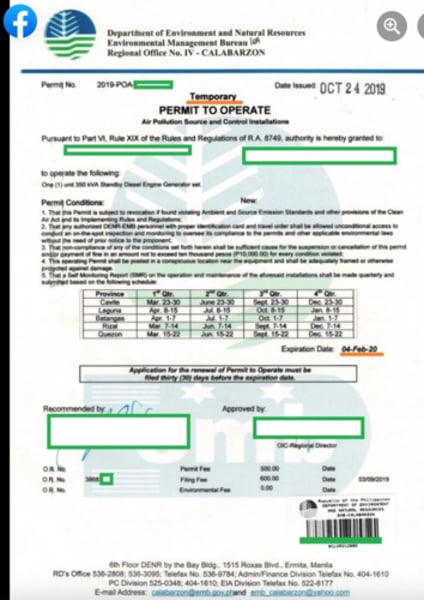
Permit to Operate Requirements

A fine of not more than P100,000 for every day of violation shall be charged against the owner of a stationary source, until such time that standards have been met.
What will be done to polluting industries?
not less than six years but not more than 10 years upon the discretion of the court
Cease and Desist Order
For gross violation, the penalty is imprisonment of _____________. At the same time, the Pollution Adjudication Board (PAB) could close the firm through the issuance of a ___________.
1. Three or more specific offenses within a period of one year.
2. Three or more offenses within three consecutive years.
3. Blatant disregard of the orders of the PAB, such as, but not limited to the breaking of seals, padlocks and other similar devices, or operating despite the existence of an order for closure, discontinuance or cessation of operation.
4. Irreparable or grave damage to the environment as a consequence of any violation or omission of the provisions of the Act or its IRR.
There is gross violation of the law or its rules when any of the following occurs:
Smoking
May 25, 2001
_______ is banned in any of the following locations:
• Inside a public building;
• Enclosed public places including public vehicles and other means of transport;
• In any enclosed area outside of one’s private residence, private place of work;
The local government units are mandated to implement this provision of the law
• Penalty to violation of this provision is six months and one day to one year imprisonment, or a fine of ten thousand pesos (P10,000)
Incineration
Prohibition
(burning biomedical, hazardous, and municipal waste) except for the "traditional small-scale method of community or neighborhood sanitation 'siga,' traditional, agricultural, cultural, health, and food preparation and crematoria."
Smoking "inside a public building or an enclosed public place
Prohibition
_________ including public vehicles and other means of transport or in any enclosed area outside of one's private residence, private place of work or any duly designated smoking area."
unleaded premium gasoline, automotive diesel, and industrial diesel fuels without meeting fuel specifications.
Prohibition
"Manufacture, import, sell, supply, offer for sale, dispense, transport or introduce into commerce" _____________
leaded gasoline
Prohibition
"Manufacture, import, and sale of _______ and engines and/or components requiring leaded gasoline."
fuel or fuel additives without
registration
Prohibition
"Manufacture, processing, and trade" of __________
them having prior ______ with the Department of Energy.
Department of Environment and Natural Resources (DENR)
Who should implement the Clean Air Act?
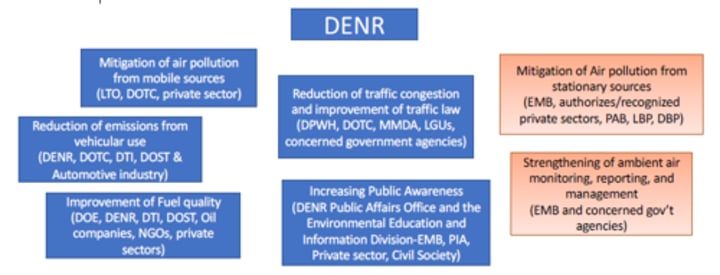
Air quality index (AQI) and PM 2.5 air pollution in Philippines
Air Quality in Philippines

causes of air pollution
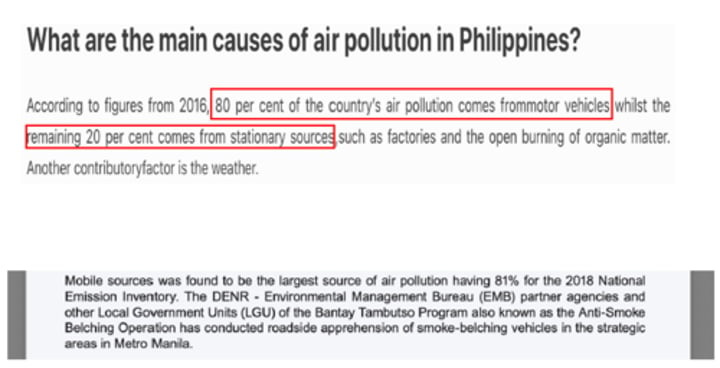
AIR QUALITY INDEX (AQI)
• tells how clean or polluted the air is - what associated health effects might be a concern
• Six categories (EPA)
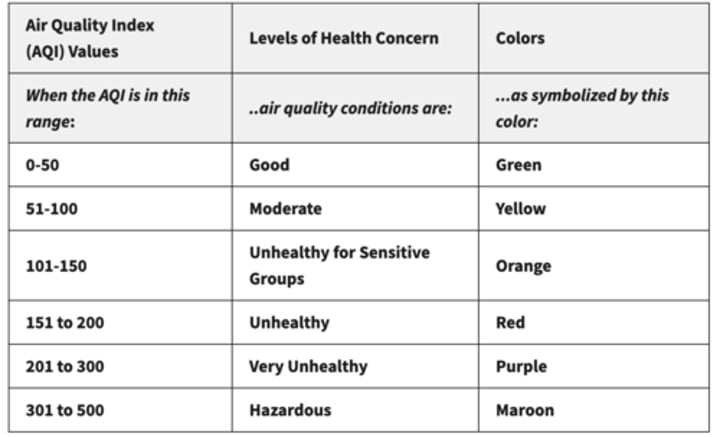
Good ( 0 - 50)
Air quality is considered satisfactory, and air pollution poses little or no risk.
Moderate (51 - 100)
Air quality is acceptable; however, for some pollutants there may be a moderate health concern for a very small number of people. For example, people who are unusually sensitive to ozone may experience respiratory symptoms.
Unhealthy for Sensitive Groups (101 - 150)
Although general public is not likely to be affected at this AQI range, people with lung disease, older adults and children are at a greater risk from exposure to ozone, whereas persons with heart and lung disease, older adults and children are at greater risk from the presence of particles in the air.
Unhealthy (151 - 200)
Everyone may begin to experience some adverse health effects, and members of the sensitive groups may experience more serious effects.
Very Unhealthy (201 - 300)
This would trigger a health alert signifying that everyone may experience more serious health effects.
Hazardous (> 300 )
This would trigger health warnings of emergency conditions. The entire population is more likely to be affected.
Clean Air Act of 1999
The right of every Filipino to breathe healthy air
Air pollutant
means any matter found in the atmosphere other than oxygen, nitrogen, water vapor, carbon dioxide, and the inert gases in their natural or normal concentrations, that is detrimental to health or the environment, which includes but not limited to smoke, dust, soot, cinders, fly ash, solid particles of any kind, gases, fumes, chemical mists, steam and radio-active substances;
Air pollution
means any alteration of the physical, chemical and biological properties of the atmospheric air, or any discharge thereto of any liquid, gaseous or solid substances that will or is likely to create or to render the air resources of the country harmful, detrimental, or injurious to public health, safety or welfare or which will adversely affect their utilization for domestic, commercial, industrial, agricultural, recreational, or other legitimate purposes;
Ambient air quality guideline values
mean the concentration of air over specified periods classified as short-term and long-term which are intended to serve as goals or objectives for the protection of health and/or public welfare. These values shall be used for air quality management purposes such as determining time trends, evaluating stages of deterioration or enhancement of the air quality, and in general, used as basis for taking positive action in preventing, controlling, or abating air pollution;
Ambient air quality
means the general amount of pollution present in a broad area; and refers to the atmosphere's average purity as distinguished from discharge measurements taken at the source of pollution;
Certificate of Conformity
means a certificate issued by the Department of Environment and Natural Resources to a vehicle manufacturer/assembler or importer certifying that a particular new vehicle or vehicle type meets the requirements provided under this Act and its rules and regulations;
Department
means the Department of Environment and Natural Resources;
Eco-profile
means the geographical-based instrument for planners and decision-makers which present an evaluation of the environmental quality and carrying capacity of an area. It is the result of the integration of primary and secondary data and information on natural resources and anthropogenic activities on the land which are evaluated by various environmental risk assessment and forecasting methodologies that enable the Department to anticipate the type of development control necessary in the planning area;
Emission
means any air contaminant, pollutant, gas stream or unwanted sound from a known source which is passed into the atmosphere;
Greenhouse gases
mean those gases that can potentially or can reasonably be expected to induce global warming, which include carbon dioxide, methane, oxides of nitrogen, chorofluorocarbons, and the like;
Hazardous substances
mean those substances which present either: (1) short-term acute hazards such as acute toxicity by ingestion, inhalation, or skin absorption, corrosivity or other skin or eye contact hazard or the risk of fire explosion; or (2) long-term toxicity upon repeated exposure, carcinogenicity (which in some cases result in acute exposure but with a long latent period), resistance to detoxification process such as biodegradation, the potential to pollute underground or surface waters;
Infectious waste
means that portion of medical waste that could transmit an infectious disease;
Medical waste
means the materials generated as a result of patient diagnosis, treatment, or immunization of human beings or animals
Mobile source
means any vehicle propelled by or through combustion of carbon-based or other fuel, constructed and operated principally for the conveyance of persons or the transportation of property or goods
Motor vehicle
mean any vehicle propelled by a gasoline or diesel engine or by any other than human or animal power, constructed and operated principally for the conveyance of persons or the transportation of property or goods in a public highway or street open to public use;
Municipal waste
means the waste materials generated from communities within a specific locality
New vehicle
means a vehicle constructed entirely from new parts that has never been sold or registered with the DOTC or with the appropriate agency or authority, and operated on the highways of the Philippines, any foreign state or country
Octane Rating or the Anti-Knock Index (AKI)
means the rating of the antiknock characteristics of a grade or type of automotive gasoline as determined by dividing by two (2) the sum of the Research Octane Number (RON), plus the Motor Octane Number (MON); the octane requirement, with respect to automotive gasoline for use in a motor vehicle or a class thereof, whether imported, manufactured, or assembled by a manufacturer, shall refer to the minimum octane rating of such automotive gasoline which such manufacturer recommends for the efficient operation of such motor vehicle, or a substantial portion of such class, without knocking
Ozone Depleting Substances (ODS)
mean those substances that significantly deplete or otherwise modify the ozone layer in a manner that is likely to result in adverse effects on human health and the environment such as, but not limited to, chlorofluorocarbons, halons, and the like
Persistent Organic Pollutants (POPs)
mean the organic compounds that persist in the environment, bioaccumulate through the food web, and pose a risk of causing adverse effects to human health and the environment. These compounds resist photolytic, chemical and biological degradation, which shall include but not be limited to dioxin, furan, Polychlorinated Biphenyls (PCBs), organochlorine pesticides, such as aldrin, dieldrin, DDT, hexachlorobenzene, lindane, toxaphere and chlordane
Poisonous and toxic fumes
mean any emissions and fumes which are beyond internationally-accepted standards, including but not limited to World Health Organization (WHO) guideline values
Pollution control device
means any device or apparatus used to prevent, control or abate the pollution of air caused by emissions from identified pollution sources at levels within the air pollution control standard established by the Department
Pollution control technology
means the pollution control devices, production processes, fuel combustion processes or other means that effectively prevent or reduce emissions or effluent
Standard of performance
means a standard for emissions of air pollutant which reflects the degree of emission limitation achievable through the application of the best system of emission reduction, taking into account the cost of achieving such reduction and any non-air quality health and environmental impact and energy requirement which the Department determines, and adequately demonstrates
Stationary source
means any building or immobile structure, facility or installation which emits or may emit any air pollutant